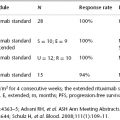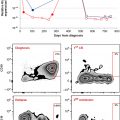Prevention and Treatment of Relapse Following Hematopoietic Cell Transplantation
City of Hope Comprehensive Cancer Center, Duarte, CA, USA
Introduction
Allogeneic and autologous stem cell transplant are therapies that are utilized to cure either patients with high-risk hematologic malignancy in first remission or those patients who suffer a relapse and have little or no other potential curative options. Autologous transplant historically has been utilized as a way of delivering high-dose chemotherapy to eliminate residual tumor cells, using cryopreserved stem cells to reestablish both hematopoiesis and immune reconstitution after clearance of the drugs. The major risk of the procedure in the autologous setting is recurrence of the disease, something that is, unfortunately, common in both Hodgkin and non-Hodgkin’s lymphomas and multiple myeloma, which are the major indications for the use of this approach.
For those patients undergoing allogeneic transplantation, the goal is similarly cure, but relies, in large part, on the graft-versus-tumor (GVT) effect mediated by the donor immune cells, be it from a related, unrelated, or cord blood donor. Although originally almost all transplants utilized high-dose chemoradiotherapy or a high-dose chemotherapy regimen alone, over the last decade, with increasing understanding of the role of the GVT effect, reduced-intensity transplant regimens have been utilized and have now been applied to the care of older patients with hematologic malignancy, especially acute leukemia and myelodysplasia. Although the risks of the transplant are different in the autologous and allogeneic settings, the major problem for many patients is relapse of the disease. This risk is related, in large part, to the disease status of the patient prior to transplant, the molecular nature of the genetic abnormalities associated with that disease, and the extent of prior therapy. Patients who are in remission tend to do better than those who are not in remission at the time of transplant, and now disease assessments include measurements of minimal residual disease (MRD) to further quantitate the burden of disease going into transplant and its impact on transplant outcomes. Thus, pretransplant, conditioning regimen, and post-transplant intervention strategies are being explored to reduce the chances of relapse and lead to better outcomes The clinical scenarios described in this chapter focus on the dilemma faced by physicians in assessing patients for transplant and dealing with the aftermath, should there be a relapse of the disease.







